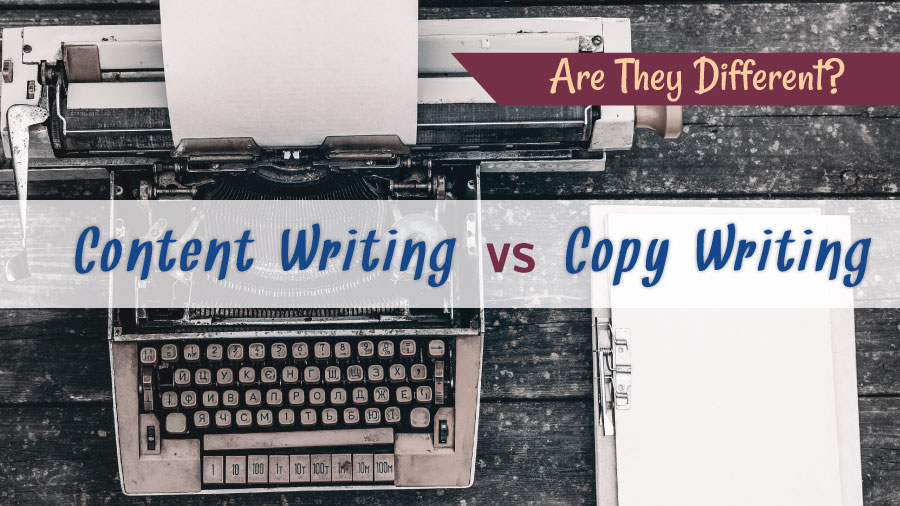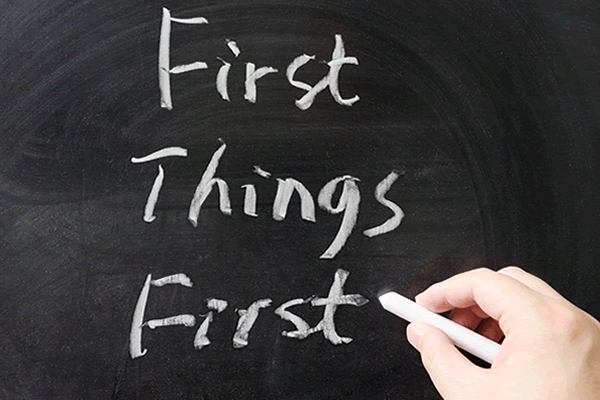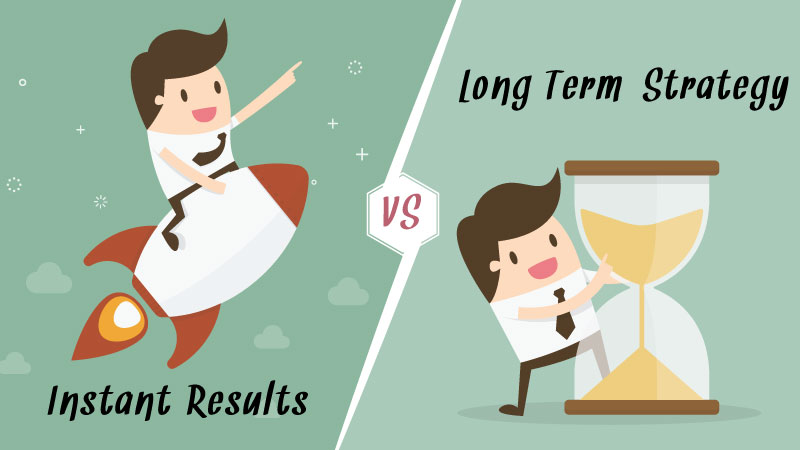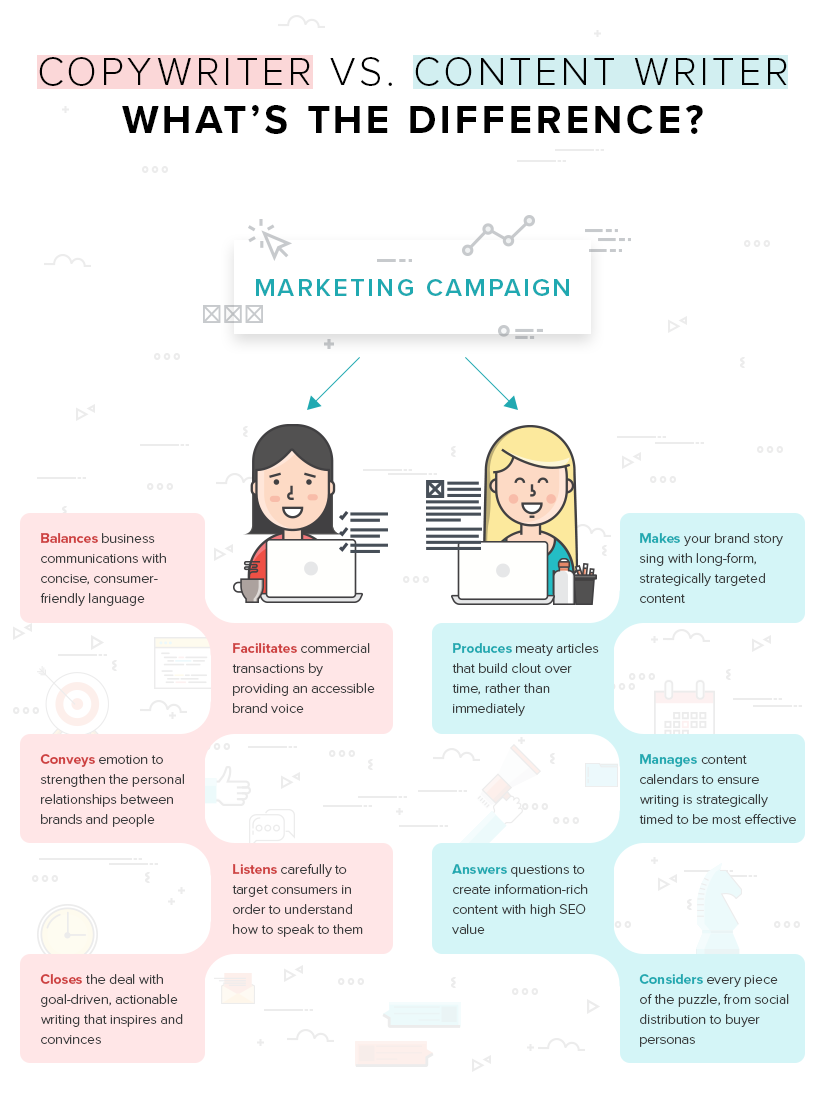Steph W. from SEOPressor


...help you check your website and tell you exactly how to rank higher?


92
score %
SEO Score

Found us from search engine?
We rank high, you can too.
SEOPressor helps you to optimize your on-page SEO for higher & improved search ranking.
By jiathong on November 1, 2018

Copywriting and content writing are both weaving words together to market products and services. But they actually serve very different purposes in terms of marketing, let’s see what the differences are.

First things first, how can we tell a copy from a content?
Copy: A copy comes from the old form of advertisement such as flyers, mails, notice boards etc. The main point of a copy is to sell.
See those gif banners on the top, bottom, and sides of a website? Those are a copy. The advertisements on the wall of your bus stop telling you how refreshing a drink is? That’s also a copy.
Due to the limited space and the small span of time to grab a prospect’s attention, a copy is usually kept as short and as impactful as they can.
Content: What you’re reading right now, this is a piece of content.
A piece of content is usually either informative or entertaining, featuring a couple of thousand words to serve a multitude of purposes such as answering a question, sharing an opinion, providing guidance, etc.
Content writing in the sense of inbound marketing aims to target searcher’s intent and to rank high on the search engine result page. That’s how a certain website can attract visitors passively and slowly transform them into a customer.

Content writing is a big part of inbound marketing (a term coined by Hubspot) that targets to warm up potential clients by getting their attention and keep on providing them with informational or entertaining contents that suits their interest.
What this plan to achieve is, with time, visitors will turn to returning visitors and finally a lead or a customer.
Copywriting, on the other hand, is more of an old-school direct marketing approach. Copies are usually structured to be emotionally moving and, demanding. Their motive is very simple, they need the customer to perform an action. Be it subscribing to a newsletter or make a purchase, a copy aims to push the reader to do it and do it now.
It’s not unusual to have a piece of content, either a detailed informative piece on what is on page SEO or a coverage on the newest big android update to go up to thousands of word count.
Hubspot’s own study found that the sweet spot for a piece of content to rank high in the search result page is 2,500 words.
Copywriting on the other hand usually works on shorter mediums like ads banners or cold call emails.So it is important to pack as much impact into the least wordcount. That way a copy can get the attention of the reader instantly.


You can probably tell it’s a Nike advertisement for their Just Do It campaign without it explicitly telling you it’s Nike right? A copy is closely associated with a brand name and needs to maintain the brand voice in order to ingrain themselves into the consumer’s mind.
Moreover, a copy is usually paired with other visual aspects such as the color theme of the advertisement, the font, the logo etc. That’s why, in order to matches with the other elements surrounding it, a copy needs to maintain a consistent brand voice.
Content writing, on the other hand, do not need to maintain a brand voice. The aim of creating a piece of content is to build trust and authority to warm up the readers to their brand.
Which means that there are certain styles that are advisable to use while creating a content. Some content writers prefer to be more casual and use a conversational tone. For some more academic or scholastic content, they can aim for an academic writing style instead.
For content writing, as long as the points are clearly delivered and the piece is easy to read and follow, it’s all good.

Because of the specific nature of copywriting, they tend to work with what is given by the client and expand little from there.
Especially when it’s a product promotion copy, the specifications of the product is often what needed to be showcased. That’s why copywriters craft their copy using what is given and their mission is to make the information as appealing as possible.
Content writing is much much different. In the sense that content writing is 70% research and 30% writing.
A lot of the time, a content writer is actually tasked with writing a topic that they know nothing about. Things like rock drills, content management software or cryptocurrency trading platforms. Topics from a specific niche that requires technical knowledge.
That’s why creating a piece of content always starts with researching the content. And not just that, content writers also have to conduct keyword research to make sure that their content is optimized and highly visible and valuable to search engines and readers alike.

Content writing is a long-term plan involving a lot of search intent matching, keyword research, follow up with the latest SEO techniques, spreadsheets, and a content calendar. Posts are scheduled according to topics or a certain theme series.
Because it is a constantly ongoing process, content writers need to plan everything beforehand to focus on pumping out contents, restlessly. They often have an active role in planning out the content calendar after their own pace.
Copywriter, on the other hand, follows a much more “on demand” schedule. They are usually given projects that have to be completed within a deadline. Because of their much more aggressive marketing nature, they need to work following the pace of a promotional/ marketing period.
There are probably a few clients needing the job done ASAP. And a few more other projects with feedbacks needing editing sitting in the mailbox. All of these have a deadline to follow.
Due to the many limitations for a copy like the length, where it appears, what it needs to achieve, the other elements it needs to cooperates with etc, a copywriter needs to be absolutely creative to wing the words around to be all that.
There really isn’t a more challenging work than create a copy that is both persuasive and emotive with just the right amount of information to keep you hanging and still fit in a 300×50 banner ad.
That’s why copywriting is most certainly creative work.
Content writing, especially in inbound writing is all about creating the relevant pieces of contents that answer a certain search query. They call this search intent targeting. The rationale behind this is, if someone found your content while looking for something on the internet, they will start having some kind of trust on you and that trust will be the push for them to choose you when they need to buy a product or service.
That’s why content needs to be informative, detailed and even technical in some cases.
A copywriter and a content creator do vastly different thing when you look at them as totally different and separated jobs. But the thing is, a lot of people actually blurs the line between a copywriter and a content creator cause, hey, it’s just writing right?
There are in-house copywriters or content creators for marketing companies, advertisement firms or what-not where the two jobs are clearly recognized as well, two jobs. But for a lot of smaller companies or writers doing freelance, anything involves writing, they’ll usually take it.
If you need to hire a copywriter or a content creator but not both, be very clear about the goal that you want to achieve.
If you need an absolutely eye-catching copy for a banner ad that can convert, you need a copywriter.
Need someone to pump out consistent blog posts about your specific product niche? A content creator then.
On the other hand, If you’re thinking about advancing in this career path of being a wordsmith, be very clear about whether you’re more of a creative person who can write great headlines for a single copy and be ready that none of it will be accepted. Or whether you’re good at researching stuff and have the confidence to write like an expert on a subject that you just learned about 24 hours ago.
You’re good at both? Well, why not!
Let’s sum up this post with a great infographic from MarketingProfs

Related Links:
Updated: 28 November 2025


Save thousands of dollars (it’s 100x cheaper)

Zero risk of Google penalty (it’s Google-approved)

Boost your rankings (proven by case studies)
Rank High With This Link Strategy
Precise, Simplified, Fast Internal Linking.
